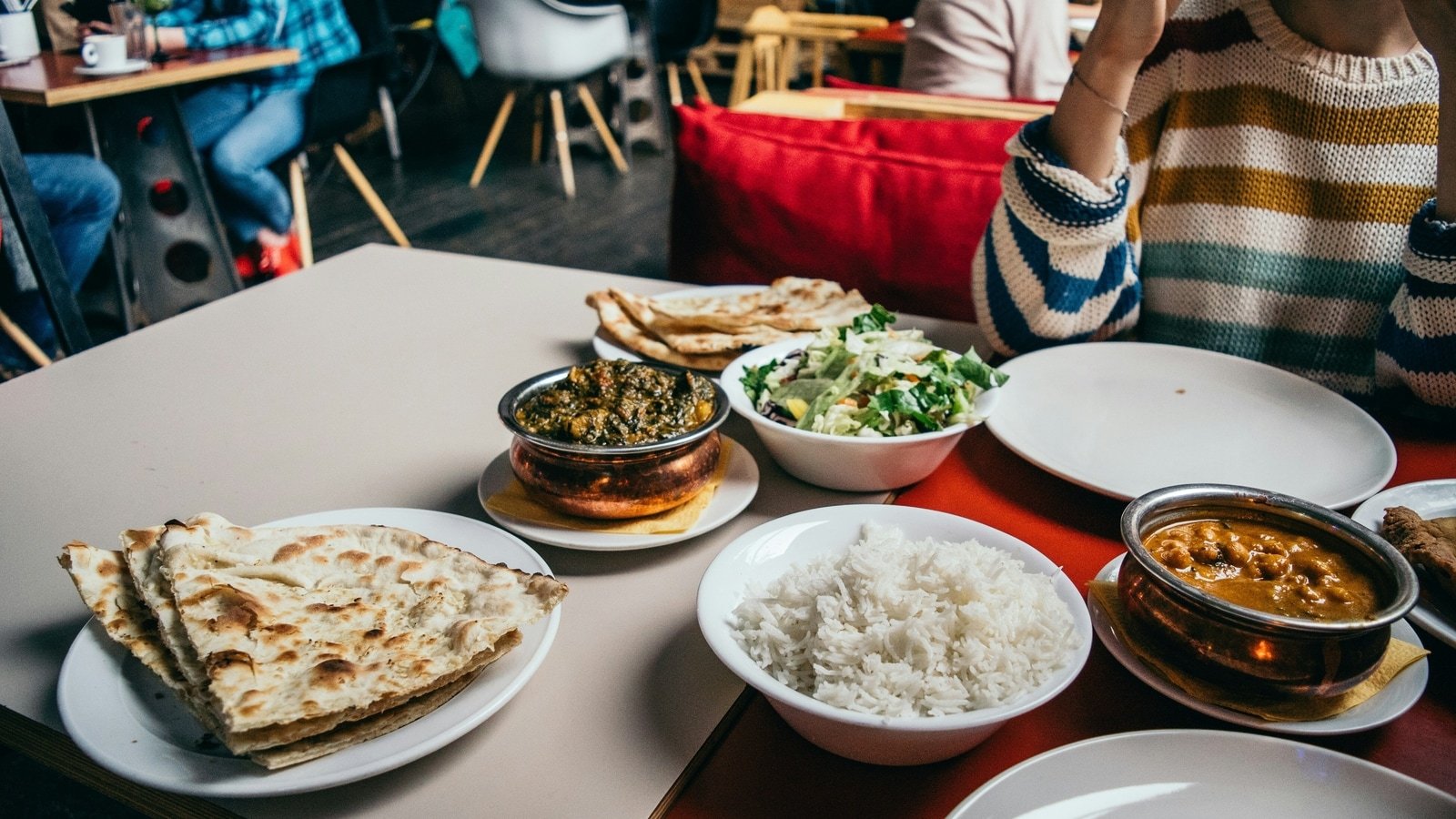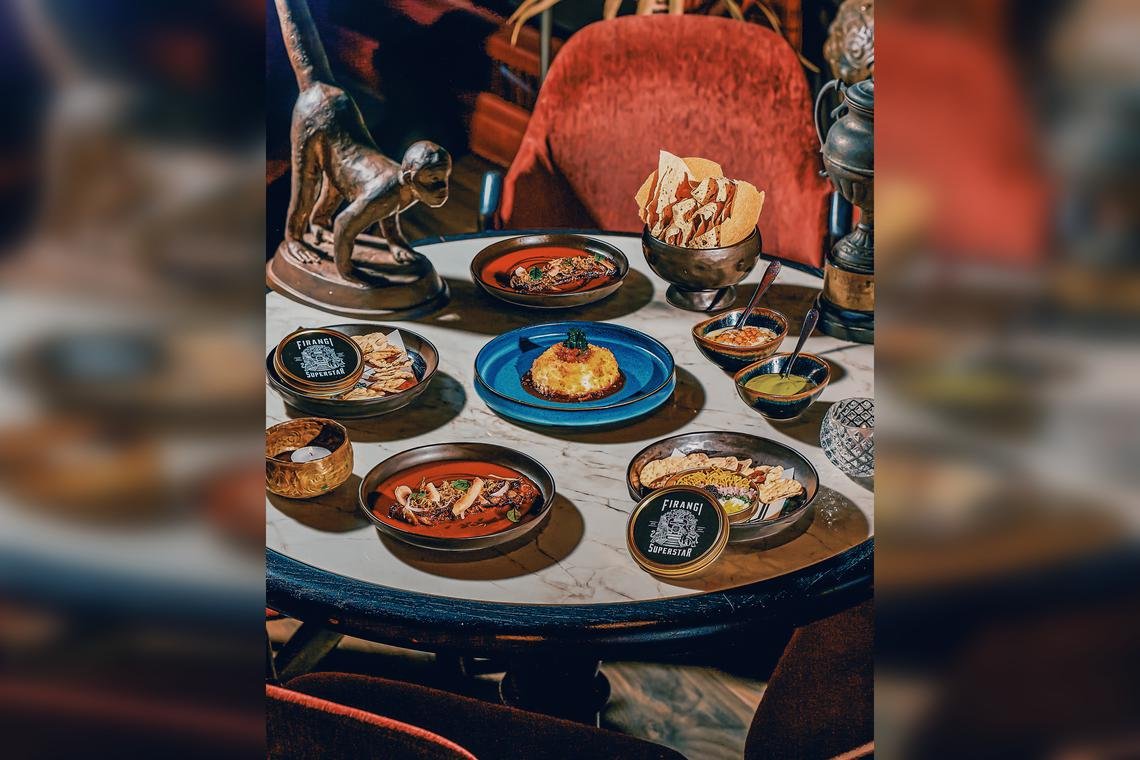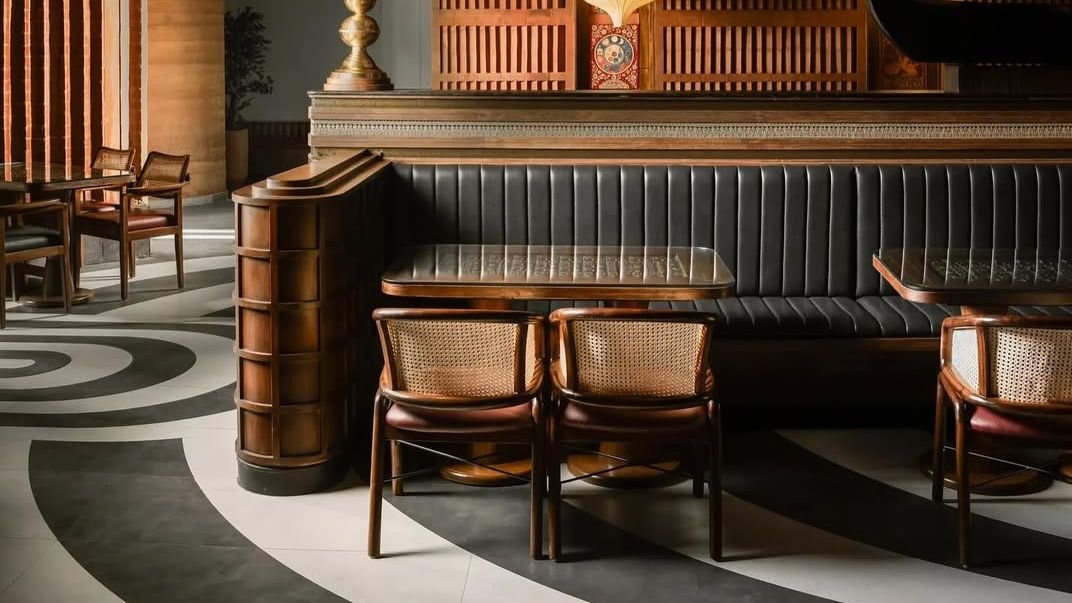Restaurants & Food
The best restaurants in Chianti
Trattorias, osterias and restaurants with a view, here is where to eat in this beautiful area of Tuscany
Chianti is one of the most beautiful and poetic areas of Tuscany, lying between the cities of Siena and Florence and framed by gentle hills and hillocks that make it unique in every aspect. An area famous for its quality wine but also for its excellent food.
There are many restaurants in which to stop between Greve, Radda, Panzano and Gaiole to taste the most typical Tuscan specialities, below we discover the best in the area not to be missed!
If, on the other hand, you would like to know our selection of restaurants around Florence, click here, while here you will find our selection of the most beautiful wine cellars to eat in Tuscany.
Let’s start with a real must, the old butcher’s shop of Dario Cecchini, the butcher who cooks by praising the passages of Dante. Cecchini does not just mean butcher’s shop, but Tuscan meat in all its finest declinations: the Cecchini Panini Truck, the truck with a grill on board. To find it, all you have to do is follow the aroma of the butcher’s hamburger and steak cooked on the grill! Then we find the Officina della Bistecca (Steak Workshop), to enjoy a gastronomic experience where the steak is the real protagonist, and finally Solociccia, where you eat ‘solociccia’ (only steak), according to a set menu and only house wine or a bottle of house wine on the table.
Situated in the Chianti hills, it is the ideal place for all those who love and wish to enjoy excellent traditional Tuscan cuisine. The family-run restaurant has a garden and guarantees that dishes are prepared with respect for ancient flavours. You will delight both the eyes and the palate. The restaurant has a magnificent panoramic terrace where you can enjoy the best dishes of traditional Tuscan cuisine accompanied by excellent wines.
Wrapped in the embrace of the Chianti region, the Osteria is the place where flavours, scents, landscapes and intoxications of Tuscany come together. The menu perfectly embodies the spirit of the season and the raw materials are of the highest quality. The result is a cuisine of great balance, where creativity is light and well dosed, while tradition is deeply respected. All to be enjoyed in fine weather on a beautiful terrace surrounded by greenery.
At Ristorante Il Pievano, Michelin Star 2017, you will discover how tradition and respect for the products of each season can be combined with flair and originality, in a gastronomic journey with Chef Stelios Sakalis that is worth a trip to Chianti alone. In the game you will recognise the scents of the woods. In the selection of wines the strong character of our grape varieties. Here you will find the authentic flavours of Chianti, so simple and yet so different from anything you have tasted before.
Among the Chianti hills, the restaurant osteria Il Papavero enlivens the small square of the ancient village of Barbischio, situated on a hill overlooking the town of Gaiole in Chianti. The pretty stone terratetto, formerly the village shop, retains its warmth and convivial atmosphere today thanks to the rustic style of the interior and the traditional flavours of the dishes. The rough stone of the walls is the backdrop for the distinctive and colourful works of painter Franco Innocenti. The pleasures of food, interwoven with the charm of art, in the splendid Chianti landscape leave guests with the memory of an unforgettable experience.
On the piano nobile of the 18th-century Villa Pianigiani, we find the conviviality of Ristoro di Ama. The aim of Marco Pallanti, Castello di Ama’s oenologist since 1982, is to create wines that are drinkable, without ever losing sight of the pleasantness of being at table. The Ristoro aims to combine the tasting of great wines with a traditional menu to be discovered in a dream setting.
The eighteenth-century convent adjacent to the Church of Santa Maria al Prato houses the Casa del Chianti Classico, with an exclusive enoteca of Chianti Gallo Nero wines, the bistro Al Convento, which occupies the evocative spaces of the ancient refectory, the cloister and the large terrace overlooking the Chianti hills, a sensorial and informative itinerary dedicated to wine and the history of Chianti Classico, exhibition spaces, and in-depth courses on wine (and more).
A characteristic Wine Bar Osteria with wine bar, located in the historic centre. It offers local products, first courses with fresh pasta, main courses, desserts. Small but cosy, family-run establishment.
In Lucarelli, very close to Radda in Chianti, we find the Osteria Le Panzanelle, with a traditional menu based on local dishes, but changing according to seasonality. Try the soups and fresh pasta, especially the ravioli and gnudi. Among the main courses, don’t miss the peposo, steak and tripe, and to end on a high note the classic cantuccini with vinsanto.
Not just a butcher’s shop but a place where you can taste all the most typical dishes of the area. The Antica Macelleria Falorni is the perfect place for a food experience that starts in the fields and continues with the butcher’s shop, where you can find numerous cuts and preparations already processed, and ends with the bistro in front of the arcades. Here you can sit and enjoy a menu based on the traditional recipes of Tuscan rural cuisine: a menu that ranges from tartare, sandwiches, salads and desserts. All accompanied by a selection of wines by the glass. Just a few minutes’ walk from the piazza, we reach the Enoteca Falorni, with its 1,000 labels all to be discovered.
An osteria with a pleasantly rustic atmosphere and outdoor tables overlooking Greve’s main square, Piazza Matteotti. Dishes not to be missed include taglierini with Cinta Senese sauce, Bistecca alla fiorentina, Chianina peposo and stracotto di guancia.
If you want to dine among the vineyards, Terreno 5 minutes from Greve is the place for you. In spring, summer and autumn you can enjoy tasty and elegant dishes in the cosy dining room or on the spacious terrace. The flavours are genuine and the dishes are paired with Terreno wines with playful creativity. From time to time, there is no lack of more original dishes related to Scandinavian food culture. The ingredients are locally and exclusively Tuscan.
For a Chianti Classico experience, a visit with tasting in the cellar of the famous Lamole di Lamole estate is a must. After being welcomed in the Salotto di Lamole, we move on to the cellar to admire the Historical Vineyard and the Experimental Vineyard: the technologically advanced winemaking cellar will contrast with the Historical Cellar, where the ‘historical memory’ of Lamole is kept: the many bottles bear witness to the ageing capacity of the wines born in this village of excellence. The visit ends with the Vinsantaia, where one of the symbolic products of Chianti Classico is slowly refined: Vinsanto. This is followed by a tasting of four wines paired with small samples of typical products.
A meeting place in the heart of our Chianti Classico. Vitique is a journey of exploration into the world of wine and contemporary Italian cuisine. Simplicity, authenticity and a vocation for all that is beautiful and good. The restaurant menu also offers three tasting courses, while the bistro is only open for lunch and invites you to a simpler, less demanding experience.
Restaurants & Food
28 new restaurants in India you should grab a meal at this August – Vogue India
Restaurants & Food
The Taste by Vir Sanghvi: Indian restaurants shine globally with Michelin stars and authentic flavours

You have probably heard of Semma, the only Indian restaurant in New York to win a Michelin star. And of Gymkhana, the only Indian restaurant with two Michelin stars in London. Of Jamavar, the only Indian restaurant in the world to have won Michelin stars in three different avatars in three different cities: London, Doha and Dubai.
What, you may well ask, do these restaurants have in common?
There are two answers to this question. The first is the obvious one: they are all Indian restaurants run by chefs who have worked or trained in India. Vijaya Kumar of Semma is very proud of cooking the authentic cuisine of Tamil Nadu’s not-so-elevated castes and makes it hot and spicy. (He started out at the Taj Connemara in Chennai.) His boss, and one of the founders of Unapologetic Foods, which owns Semma, Chef Chintan Pandya, says that the group gets its name from its determination to refuse to apologise for the flavours and oil that characterise Indian food. (Chintan is ex-Oberoi.)
In London, one of the first things that Karam Sethi, the chef-founder of Gymkhana, said to me when I called to congratulate him on Gymkhana’s two stars was “it’s real Indian food, not ‘modern’ Indian.” Gymkhana serves the sort of food Indians actually eat, not a poncy, spice-deprived version. Gymkhana’s Executive Chef Sid Ahuja is ex-Oberoi and Sethi himself trained with ITC.
The most recognisable Indian of the top global restaurants is Jamavar. It was founded by Dinesh Nair, whose family used to own Leela Hotels, and is run by his whiz-kid daughter, Samyukta. The London Jamavar is international in clientele but you will nearly always see a top Indian movie star or cricketer there. This may have something to do with the fact that its chef, Surender Mohan, commands after his years working with the Leela group in India.
Samyukta and Surender took Jamavar to Doha where it became just one of two restaurants to win a Michelin star. (The other restaurant with a star is run by Alain Ducasse.) Next, they opened in Dubai and within a few months of opening, they had a star there too.
I met Surender at the Michelin ceremony in Dubai and was pleased to see that he was one of the few chefs not to be intimidated by the occasion and he gave the longest and best speech of the evening. But then I guess he is now used to attending these events in city after city.
Clearly something new and unusual is happening with Indian food abroad even if we don’t fully understand it here in India. There have been, broadly, four phases with Indian food in the West. The first was the ‘ethnic food’ phase when Indian food became the browner equivalent of chop suey and restaurants served mostly made-up Indian dishes at inexpensive prices.
The second was when Indian food went upmarket but was also Frenchified and plated. In the UK, restaurants serving this kind of food were celebrated and some got Michelin stars. In New York, Floyd Cardoz served two kinds of cuisine. At Tabla, he served a nouvelle take on Indian food and got three stars from the New York Times. But downstairs, at the Bread Bar, the food was more basic and less nouvelle. Even so, the general rule was that if you wanted rave reviews and high-profile rich guests, then you moved away from traditional Indian.
The third phase coincided with a global change in food preferences when French food ceased to be as admired as much. As El Bulli and later, Noma, set the trend, this was reflected in Indian food too. Gaggan Anand worked with the Adria brothers of El Bulli and opened a restaurant in Bangkok that served the kind of Indian food nobody had imagined could exist. Also, in Bangkok, Garima Arora opened Gaa which went on to win two Michelin stars. There was a fair amount of cross-fertilisation. Garima had worked with Rene Redzepi at Noma and with Gaggan. Redzepi himself had worked at El Bulli.
Almost simultaneously, Manish Mehrotra, whose resume included no great restaurants, invented his own version of modern Indian cuisine at Delhi’s Indian Accent. Mehrotra’s background was oriental cuisine so he had no interest in Frenchifying his food. Mehrotra and Gaggan ended up being the most influential Indian chefs of this century with their dishes being copied all over the world.
Himanshu Saini, the only Indian chef with a restaurant that has three Michelin stars (Dubai’s Tresind Studio) worked with Manish and is candid about his debt to the master.
But now I think we are into a third phase. People want Indian food without the frills. They want to eat like Indians eat in India. Vikas Khanna, India’s most famous chef, opened Bungalow in New York, serving food that was no different to the food he would serve in India and got three stars from the New York Times, and there’s usually a queue for tables outside his restaurant. At the less expensive end of the market Dhishoom which claims to be inspired by Mumbai’s Irani restaurants is so successful across the UK that it has now set its sights on America.
Of course, no change is absolute. There are still Bangladeshi curry houses calling themselves Indian restaurants. The Frenchified expensive Indian restaurants survive. The Gaggan-style modern Indian is still a rage.
But the trend is clear: Keep it simple and keep it spicy.
Restaurants & Food
Food Picks: Modern Indian with a Western twist at Firangi Superstar

SINGAPORE – Do not be fooled by Firangi Superstar’s plain terracotta exterior. There is nothing minimalist about the experience here.
It overwhelms before the first bite even hits the table, spinning you through rooms crammed with memorabilia. Think American film-maker Wes Anderson on a trip through Delhi, a kind of kitschy fantasyland for colonial nostalgists wrapped in ornate wallpaper and studded with vintage firearms.
Thankfully, this meeting of worlds is far more amicable when confined to the kitchen of this modern Indian restaurant, which opened in 2021.
Firangi Superstar’s decor is as bold as its menu.
PHOTO: FIRANGI SUPERSTAR
Have a seat. Red? Blue? Cushion? Chair? Oh, here comes the menu, recently revamped and folded into a newspaper – with actual clippings, by the way, just in case you were done gawking at the mounted moose heads on the wall and wanted something else to look at.
Open it up. Today’s big story is a list of dishes, both old and new, Indian and international, all with characteristically eyebrow-waggling names.
Some riff off old iterations – This Is Also Not Aloo Gobi ($18++) still holds the traditional curry at arm’s length, even as it borrows its taste. Others squeeze in a winky pun – We’re Goan-Ing To Porto! ($96) beckons to diners with grilled Iberico pork and sorpotel chilli sauce.
Big personalities work only if backed up with big flavours, and Firangi Superstar’s bite is as good as its bark. Starters like Papi’s Jammed Gun ($29++), wagyu beef tartare with caviar, grated egg and gunpowder spice, and Big Baller Peperoner ($28++), its version of paneer Manchurian, with fried burrata and Manchurian chilli sauce, expertly fuse Western ideas with south Asian flair.
The Bengal Bake-Off from Firangi Superstar.
PHOTO: FIRANGI SUPERSTAR
Off to a riotous start, I move on to mains. The Bengal Bake-Off ($108++) is trotted out in show-stopping fashion: a salt-baked seabass emerges from its crust, tender and steaming, and is robed in Kasundi cream.
Back In The Saddle ($21++ for 100g) triumphantly rides in on tandoori-spiced lamb, crowned with confit garlic and chilli leaf. All these dishes also come in vegetarian form, should you so desire.
In the middle of this lip-smacking extravagance, a few humble sides quietly sneak their way onto the table. Turn your attention immediately to the black garlic naan ($14++). Look how pillowy the bread is, breathe in its nutty fragrance. You already know it is going to be a knockout.
End the night with some banoffee fritters ($14++) or Rasmalai “tres leches” ($16++). Recline back on your throne of pillows, cocktail or royal melon lassi ($20++) in hand.
Firangi – Hindi slang for foreigner – or no, one really does feel like a superstar here.
Where: 01-03, 20 Craig Road
MRT: Maxwell/Tanjong Pagar
Open: Noon to 2.30pm, 5.30 to 10pm (Mondays to Saturdays)
Info:
www.firangisuperstar.com
-

 Brand Stories3 weeks ago
Brand Stories3 weeks agoBloom Hotels: A Modern Vision of Hospitality Redefining Travel
-

 Brand Stories2 weeks ago
Brand Stories2 weeks agoCheQin.ai sets a new standard for hotel booking with its AI capabilities: empowering travellers to bargain, choose the best, and book with clarity.
-

 Destinations & Things To Do3 weeks ago
Destinations & Things To Do3 weeks agoUntouched Destinations: Stunning Hidden Gems You Must Visit
-

 Destinations & Things To Do2 weeks ago
Destinations & Things To Do2 weeks agoThis Hidden Beach in India Glows at Night-But Only in One Secret Season
-

 AI in Travel3 weeks ago
AI in Travel3 weeks agoAI Travel Revolution: Must-Have Guide to the Best Experience
-

 Brand Stories1 month ago
Brand Stories1 month agoVoice AI Startup ElevenLabs Plans to Add Hubs Around the World
-

 Brand Stories4 weeks ago
Brand Stories4 weeks agoHow Elon Musk’s rogue Grok chatbot became a cautionary AI tale
-

 Brand Stories2 weeks ago
Brand Stories2 weeks agoContactless Hospitality: Why Remote Management Technology Is Key to Seamless Guest Experiences
-

 Asia Travel Pulse1 month ago
Asia Travel Pulse1 month agoLooking For Adventure In Asia? Here Are 7 Epic Destinations You Need To Experience At Least Once – Zee News
-

 AI in Travel1 month ago
AI in Travel1 month ago‘Will AI take my job?’ A trip to a Beijing fortune-telling bar to see what lies ahead | China

